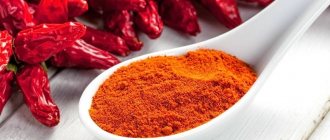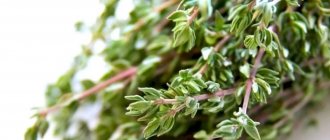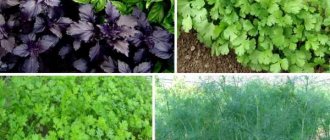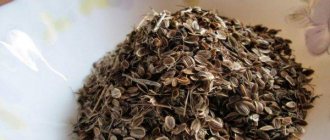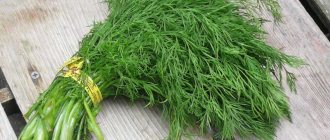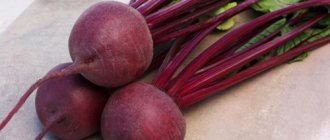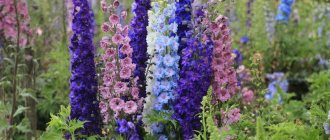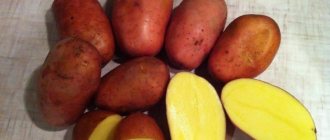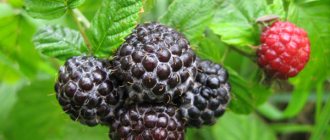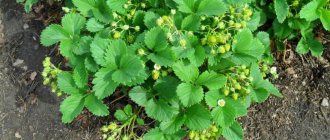Fennel and dill: are they the same thing or not, the difference is in the properties and external characteristics of the plants
Many people think that fennel and dill are the same thing.
However, these are completely different plants, the differences of which need to be known not only by cooks, but also by people who are going to use these products for food. The origins and medicinal properties of fennel and dill are significantly different, although these plants are somewhat similar in appearance. Those who see fennel for the first time mistakenly think that it is a type of dill. The fact is that dill has long been familiar to our people, as it has been growing in this region for a long time.
And fennel was grown for a long time by people in Southern Europe and North Africa. Under natural conditions, it grew only in the south of the Caucasus.
To understand the differences between fennel and dill, you should consider in detail the appearance, composition and beneficial properties of each of them.
Characteristics and properties of fennel
Fennel is an annual or perennial herbaceous plant of the Umbrella family. The plant can reach 2 m in height. The yellowish rhizome is characterized by fleshiness. The finely ribbed stems grow straight and are highly branched. The pinnately dissected leaves have an ovate-triangular shape.
The upper plates are sessile, and the lower ones are petiolate. Flowers with yellow petals are collected in dense inflorescences, located on double umbrellas, each of which can have 4–20 rays. The diameter of one umbrella is approximately 18–20 cm.
The fruits are oblong-ovoid in shape and have standard dimensions of 1x2 mm.
A native of subtropical latitudes needs careful care, which consists of regular loosening of the soil, hilling and abundant watering. The plant should be planted in a well-lit area, since it will not be able to develop in the shade.
The beneficial properties of fennel can be extracted from the fruits, which contain:
- vitamins A, C, D, E, K;
- B vitamins;
- macroelements - potassium, calcium, magnesium, sodium, phosphorus;
- microelements - iron, manganese, copper, zinc;
- essential oils;
- phytosterols;
- amino acids;
- saturated acids;
- polyunsaturated and monounsaturated fatty acids.
Fennel stems and umbrellas are used as a flavoring in pickles and marinades. The fruits are used as a spicy seasoning for hot dishes and salads. Stewed roots of the plant go well with meat and fish.
Description and beneficial properties of dill
The herbaceous plant dill is an annual and also belongs to the Umbrella family. Garden or fragrant dill is usually grown in summer cottages. The length of the stems, which grow straight, ranges from 40–140 cm. The shoots are characterized by slight branching, small grooves on the surface and a waxy coating.
The long and thin leaves have an ovate-pinnately dissected shape, which towards the end becomes linear-filamentous. The cushion-shaped flowers are yellow. Double umbrellas formed by inflorescences reach a diameter of 13–16 cm. One umbrella can have 25–50 rays. The gray-brown fruits of the plant are characterized by a broadly elliptical shape, their average size is 2x4 mm.
This easy-to-care plant can be planted after February, as it tolerates frost well. Dill develops well not only in the sun, but in the shade, and gets along well with other vegetable crops. There are practically no problems in growing the plant.
Dill leaves contain:
- vitamins A, B1, B2, C, P, PP;
- flavonoids;
- macro- and microelements - potassium, calcium, phosphorus, iron;
- folic acid;
- nicotinic acid;
- essential oils.
Dill is known for its characteristic aroma, thanks to which the plant is widely used in cooking. Greens are used in hot and cold dishes, salads, snacks and preserves.
Dill
Fragrant dill is a common inhabitant of vegetable gardens and summer cottages. It is easily recognized by its feathery leaves and characteristic dill smell. The stems of dill are low, up to 90 cm, and small grooves with a waxy coating are clearly visible on them. The fruits of the plant are small, gray-brown in color. They are not used for food; only dill leaves are valuable for cooking.
Dill is unpretentious - it does not require care and grows well even in frosty conditions. It reproduces by seeds, and they can be sown several times throughout the year. Shoots appear quite quickly, in just a week. As soon as the stems reach 5 centimeters in height, the leaves can already be cut and eaten.
Differences between fennel and dill
In addition to external signs, these plants have their own characteristics in cultivation and use, as they have different properties.
Features of growing fennel and dill are given in the table.
| Features of growing and harvesting | Common fennel | Dill fragrant |
| Landing method | Seedling and seed | Seminal |
| Soil moisture | High | High |
| Soil pH | Neutral | Neutral and alkaline |
| Neighbors in the garden beds | Single plant, it is not recommended to plant other plants | Gets along well with other crops |
| Frost resistance | Low, in central Russia fennel dies with the onset of cold weather | High, dill seeds can successfully overwinter in the soil and germinate in the spring |
| Light mode | Light-loving plant, may die in the shade | Light-loving plant, but can grow in the shade |
| Harvesting leaves | July August | June July |
| Harvesting seeds | September | July – September |
Properties and features of the use of fennel and dill
The difference in the properties of these umbrella plants is due to the different chemical composition of the shoots and seeds.
Fragrant dill shoots contain:
- vitamin C;
- vitamin PP;
- carotene;
- vitamins B1 and B2;
- flavonoids;
- pectins;
- carbohydrates;
- essential oil;
- mineral salts.
Composition of dill fruits and seeds:
- fatty oil (15-18%);
- proteins (14-15%);
- carbohydrates;
- essential oil (2.5-8%).
The composition of the essential oil of shoots and seeds is different, which accounts for the difference in smell. Therefore, the leaves are used in cooking, and the seeds are used in medicine as a stimulant for the digestive glands, and also as a culinary seasoning for bread.
Fennel leaves and stems contain:
- vitamins B1, B2, B6;
- vitamin C;
- vitamin PP;
- vitamin A;
- mineral salts;
- carbohydrates;
- proteins;
- flavonoids;
- essential oils.
Composition of fennel seeds and fruits:
- vitamin A;
- vitamin E;
- vitamin C;
- vitamin K;
- vitamin PP;
- vitamin H;
- vitamins B1, B2, B6;
- essential oil (2-6%);
- fats (9-12%);
- carbohydrates.
Due to its specific smell, fennel essential oil is used in perfumery. Fatty fennel oil is used as a lubricant in technology. The leaves, fleshy stems and fruits are used in cooking. Medicines for the treatment of diseases of the respiratory, digestive, nervous and cardiovascular systems are obtained from the seeds.
Main differences
Considering the above, we can clearly say how fennel differs from dill:
- each has its own aroma and characteristic taste - fennel has a spicy taste, and dill can be immediately recognized by its intense smell and rich taste, which is unique to this plant;
- dill must be planted every year, since it is an annual, while fennel has a powerful root system, and it will appear in the garden for at least two years in a row after planting;
- there are obvious differences in appearance and care - fennel is much taller, it is planted later, and dill is much less demanding both in terms of conditions, since it can easily tolerate light frosts and in care;
- The chemical composition of seeds and leaves also differs, which is why each plant has its own specific ones, and therefore they are used in the treatment of diseases of various etiologies.
Now you know the difference between fennel and dill. However, there is also a similarity - these are healing plants that, when used correctly, can protect you and, if necessary, cure you from many diseases. Grow them on your plots and replenish your health!
All materials on the Priroda-Znaet.ru website are presented for informational purposes only. Before using any product, consultation with a doctor is MANDATORY!
Olga Koroleva
Published: 18-07-2017
Updated: 08-11-2019
Olga is responsible for the selection of authors and the quality of published materials on our website.
Traditional medicine recipes based on fennel
Fennel is especially widely used in folk medicine, both independently and as part of combined remedies. Mainly oil, seeds and herbs are used.
- For bronchitis, it is recommended to dissolve 7-10 drops of fennel essential oil in 200 ml of boiled milk. For taste, you can add a spoonful of sugar or honey. Take warm 3 times a day.
- Coughing attacks can be mitigated by using 5 g of crushed seeds, pour a glass of boiling water over them and cook over low heat for about 30 minutes. Then leave covered for another hour. Take the expectorant 2 tablespoons before meals, three times a day.
- For flatulence, indigestion and cramps, you need to take 5 g of crushed seeds and pour 200 ml of boiling water. Leave covered for 10 minutes, then strain and take 100 ml three times a day before meals.
- To increase milk production, a combination drug is used. You need to take 1.5 g of fennel, anise and dill seeds and stir everything in a glass of sour cream. Transfer to the oven and bake for half an hour at 120 degrees. Take once a day, before bedtime.
- Another recipe for lactation is based on milk. It is necessary to grind 30 g of fennel seeds and infuse in warm milk, you can add nutmeg or other spices to taste. After straining, take every morning before breakfast.
- An infusion of 3 teaspoons of crushed fennel seeds per glass of boiling water reduces attacks of pancreatitis. Leave for an hour in a steam bath or simply wrap the container. Take the infusion 3 tablespoons 4 times a day.
- To normalize menstrual cycles, you can use fennel herb, carrots and beets. You just need to squeeze the juice in proportions 1:1:1. Take 100 ml of thoroughly mixed cocktail twice a day.
- For gastritis, a combined herbal preparation consisting of fennel seeds, crushed licorice roots, wheatgrass and marshmallow roots is used. Take a teaspoon of all ingredients and pour 200 ml of boiling water. After 30 minutes, add chamomile leaves, mix the composition and leave for another half hour. After straining, drink 200 ml at night.
- Fennel is great for helping with weight loss. You can add the seeds to various dishes and make concentrated tea. It is necessary to pour 20 g of crushed seeds into a glass of boiling water, then put on fire for 30 minutes. Take the resulting decoction once a day.
What substances and microelements do plants contain - similarities and differences?
Dill fragrant
The seeds contain essential oil (about 5%), coumarins, chlorogenic acid, caffeic acid (3,4-dihydroxycinnamic acid), flavonoids, wax, resins, protein, nitrogen, fiber, fatty oil.
The essential oil of the fruit consists of S-carvone (up to 60%), dillapiol (up to 40%), phellandrene, alpha-limonene, beta-pinene, myristicin.
The greens and fruits of dill contain B vitamins, vitamin C, P vitamins, provitamin A, Ca (calcium), Fe (iron), P (phosphorus), folic acid, and other macro and microelements.
Common fennel
The composition of common fennel seeds includes essential oil (about 6-7%), protein substances, and fatty oil.
The essential oil of fennel fruit consists of 60% anethole, alpha-pinene, alpha-phellandrene, dipentene (limonene), camphene, timolol, estragole, or methylchavicol (about 10%), ethylphenchan, fenchone (about 20%).
The content of a large part of anethole in fennel determined its medicinal properties as a healer of the digestive system. Anethole affects the intestinal walls, stimulates its motility, and revives the digestive system.
The presence of estragole, an isomer of anethole, in fennel, mainly in the fruit, contributes to its positive effects on women's health. In fact, these substances are natural hormones.
The presence of dipentene (limonene) in fennel allows the removal of carcinogenic substances from the human body.
The second plant, dill, contains large amounts of vitamin C in its leaves and seeds. Dill contains more vitamin C than lemon. This circumstance contributes to the fact that fragrant dill is a powerful oxidant, it relieves inflammatory processes, has an antimicrobial effect, and promotes rapid healing of wounds.
Coumarin contained in dill thins the blood, so in folk medicine it is recommended to use dill for thrombosis.
The content of S-carvone in dill fruits gives its seeds the smell of caraway.
The presence of dillapiol in dill leads to contraindications for the use of this plant in large quantities. Since dilapio is classified as a psychotropic substance.
What is fennel
Fennel is a plant belonging to the Apiaceae family. Popularly called pharmaceutical dill, or Voloshsky. It grows wild all over the world - in Africa, Europe, America, Asia.
The plant is cultivated in many countries. In Russia, it is grown in the middle zone of the European part, the Krasnodar Territory.
Fennel has a thick, spindle-shaped root. The stem reaches two meters in length and branches abundantly. The leaves are pinnate and sit on petioles. Flowers in umbels up to 15 cm in diameter.
Chemical composition of the plant:
- essential oils containing anethole, fenchone, cineole, camphor;
- fatty acids: oleic, linolenic, palmitic;
- flavonoids;
- glycosides;
- ascorbic acid;
- B vitamins;
- carotene;
- minerals.
Per 100 grams of grass there are 7 grams of carbohydrates, 1.5 grams of protein and 0.2 grams of fat. The plant has a low calorie content - 31 kcal per 100 grams.
The plant contains a lot of fiber, which improves the functioning of the digestive tract. The low glycemic index makes the herb beneficial for people with diabetes.
The main chemical compound in fennel essential oil is anethole. It has anti-inflammatory and antitumor activity. Can be used as a means to reduce the risk of malignant tumors in people with a family history.
The differences between garden dill and fennel are the shape of the leaves, the taste and aroma of the seeds. Dill leaves are more branched and thin. The seeds are tart, bitter, and smell sharp. In fennel they are sweetish, with a fresh aroma of anise and cucumber.
Fresh fennel leaves, heads and tubers are used as seasoning. The seeds are dried and also used as a seasoning or medicinal product. Essential oil is also obtained from the seeds.
To view a review of the plant:
Types and varieties of seasoning
Common fennel is a general name for all types of plants. Depending on the purpose, it is divided into 3 types:
- pharmacy;
- vegetable;
- decorative.
The first two varieties are used for food and medicinal purposes. The pharmaceutical variety is grown mainly for its seeds, from which essential oil is obtained.
In a vegetable variety, all parts of the grass are used for food. In places where the leaves are attached to the stem, thickenings are formed - heads of cabbage. They have a spicy taste and contain many vitamins.
There are several varieties of vegetable fennel:
- “Florentine”, “Sicilian” - prefer a mild, warm climate, do not tolerate transplantation;
- “Cantino”, “Romanesco” - form large heads of cabbage;
- “Rudi” is a hybrid variety, resistant to the formation of inflorescences;
- “Udalets” - forms heads of cabbage weighing up to 300 grams.
Read more about fennel extract.
Wild fennel has the same flavor and medicinal properties and is used as a seasoning and traditional medicine.
Sea fennel grows on the coasts of coastal countries. Outwardly, it resembles an ordinary one, but its stems are smaller in height. The roots are always immersed in sea water.
Fresh, pickled or dried fennel is used for food.
More about fennel
The celery family includes the fennel plant, which is a perennial plant. Its stems are twisted and branched and reach 2.5 meters upward. The inside structure is porous, and the outside is covered with a slightly bluish coating. The inflorescences resemble yellow umbrellas, and the leaves are thin, thread-like in shape.
This culture comes in two types: just ordinary fennel and a special vegetable fennel, which catches the eye with its fleshy, plump rhizome. The fruits are relatively large and slightly sweet, perfect for a variety of dishes. The fragrant seeds cannot be confused due to the characteristic peculiar smell of anise, intertwined with peppermint and light shades of tarragon.
You may also be interested in: The difference between cane and regular white sugar
The plant reproduces simply by seeds. Basically, they are sown in April, and the fruits will only appear in September. Fennel is wary of cold weather, so it prefers subtropical climates. But some varieties take root in other conditions.
It would be quite useful to know the distinctive characteristics of two useful plants in your garden in order to use them for their intended purpose, or in the form of a medicinal infusion of proven secrets of ancient folk medicine.
Fennel contains B vitamins, provitamin A, amino acids, biotin, zinc, calcium, copper, manganese, iron and many other micro- and macroelements.
During well-known infant colic, infants are given “dill water” using fennel seeds in the infusion. Also recommended for nursing mothers as a means to increase lactation.
What is the difference between regular dill and fennel in terms of use?
Fennel has a wider range of uses due to its higher essential oil content. In addition to cooking and medicine, it is used in the perfume and cosmetics industry.
In cooking
In cooking, both cultures are used as seasoning. They give dishes a rich spicy taste and bright aroma. The leaves are often used in dill. They are added to fresh salads, soups and side dishes. The spice will help highlight the taste of meat and fish dishes. For the winter it is dried, frozen, and canned.
Fennel is harvested from fruits or seeds. Although in summer its leaves are used to add a spicy taste to salads and side dishes. The root formations can be stewed and added to meat, poultry or fish dishes. The seeds are often used in baking confectionery, preparing vitamin teas, sauces and even alcoholic beverages.
Interesting fact!
Spicy dill and sweet fennel complement each other perfectly. Experienced housewives know about this and often use a combination of spices when canning vegetables.
In folk medicine
Both dill and fennel have long been used in folk medicine. They have similar actions, but each plant has strengths and weaknesses.
- Dill acts as a good diuretic. It is especially useful for people suffering from edema due to heart problems and hypertension. Fennel is also a good diuretic. But it is more often used to treat cystitis. Its antibacterial properties affect.
- The seeds of both crops are used to prepare chest concoctions that relieve debilitating coughs. Vitamin C contained in dill will help you recover faster from illness.
- The antibacterial properties of fennel are used as a mouth rinse for gum diseases. It also has a mild analgesic effect that can dull toothache. To get rid of bad breath, just chew the seeds of the plant.
- Dill decoction has a slight relaxing and sedative effect. It copes well with nervousness and insomnia.
- Umbrella plants can also treat skin problems. Dill is suitable for relieving allergic reactions and itching. Fennel infusion is used to treat acne and boils.
It is somewhat erroneous to believe that with the help of a decoction or infusion of plant seeds you can get rid of intestinal problems. To do this, use an extract or essential oil, which is difficult to obtain at home. However, regular consumption of aromatic greens will have a beneficial effect on the digestive system.
Attention!
You should not use umbrella crops for medicinal purposes without consulting a doctor. More recently, their decoctions were used as abortifacients.
An overdose of fennel essential oils can lead to problems with the nervous system.
What is the difference in the beneficial properties of these crops?
Dill and fennel certainly have common external features, but their chemical composition is quite different. Both one and the other culture are used for medicinal purposes. It is worth noting that these plants affect the human body in different ways. Dill has a diuretic effect and is recommended for use for problems with the gastrointestinal tract. An infusion based on dill helps get rid of problems such as flatulence. In addition, dill infusion increases the degree of lactation, can lower blood pressure, helps produce gastric juice, and reduces the level of excitability of the nervous system. Dill is used if there are problems with the nervous system. He successfully copes with insomnia, neuroses, and depression. Dill helps cope with arrhythmia, hypertension, angina pectoris and many other diseases associated with the heart and vascular system. Dill infusion is used for diseases of the genitourinary system. It is indicated for people who suffer from sand or kidney stones, cystitis. If you have skin problems, especially those related to allergies, then dill is also indicated in your daily diet.
As for fennel, it has a sedative, expectorant and antispasmodic effect. It contains quite a lot of different natural components, for this reason fennel is often used for medicinal purposes. For people suffering from gastrointestinal diseases, fennel may be beneficial. It helps cope with constipation, colic, and bloating. Fennel is also beneficial for the kidneys; it can help overcome stone disease. Fennel can also help with bronchitis, asthma, and pneumonia. For problems with the genitourinary system, for example, inflammation of the genitourinary tract, fennel can be useful. If you have any skin problems, then fennel should also be included in your daily diet.
Fennel seeds are used to prepare the famous dill water, which is often used to treat colic in young children. Liquorice elixir, which is often used for coughs, is made from fennel essential oil.
It should be noted that only the seeds of dill are medicinal, while the entire fennel is used for medicinal purposes.
RESULTS, ASSURANCE, CONDITIONS: CONDITIONS: CONDITIONS ÑаÑии
С ROOM °ÑÑÑÑ Ð¼Ð½Ð¾Ð³Ð¸Ðµ маÑеÑи.
RESPONSIBILITY AND RESPONSIBILITY наÑ, но ÑÑебÑÐµÑ Ð¾Ð¿ÐµÑаѸвного ÑеÑениÑ. RESULTS ²ÑÑабоÑки молока, ÑамÑми безопаÑнÑми из ко SMALL SYSTEM OUR RESEARCH ? енÑÐµÐ»Ñ . RESULTS ¼ÐµÐ½Ð° пÑедÑÑавленнÑÑ ÑаÑÑений в одинаково м коР"" лÑÑиÑÑ Ð¸Ñ Ð² ÑÑÑпке или коÑемолке. RESULTS ½Ð°Ñ ложка ÑмеÑи нР° 250 кипÑÑка. RESULTS ¾Ð²Ð°ÑÑ Ð½Ð° ѻедÑÑÑий денÑ.
RESULTS RESULTS, RESEARCH RESULTS 3 times. RESULTS »ÐµÐ½Ð¸ÐµÐ¼ наÑоÑÑÑ Ð² ÑеÑение 30 минÑÑ Ð¿¾Ñд кÑÑко й. RESULTS 3 points 15 points RESULTS ¾Ñле него. RESULTS µ должно пÑевÑÑаÑÑ 6 Ñаз.
RESULTS the еÑÐ ¸Ð¾Ð´Ð° лакÑаÑии.
Other plants similar to dill
There are many plants similar to dill. These are some shrubs, indoor flowers, carrot tops, small sprouts of juniper and pine trees. But among them there are poisonous ones that can cost a person his life.
Fennel flower can be confused with various poisonous plants
Poisonous
Dangerous crops similar to dill include poisonous hemlock or water hemlock . A herbaceous, moisture-loving plant that lives near bodies of water. Thin, narrow leaves and inflorescences in the form of white umbrellas can be mistaken for dill. The smell of the leaves is reminiscent of celery, the root vegetables are similar in taste to radishes or rutabaga.
Veh poisonous grows near the water
Just 50 g of rhizome can kill a medium-sized animal due to the large amount of cicutotoxin poison . A few minutes after consumption, a person begins to experience nausea, vomiting, convulsions, and dizziness. Urgent gastric lavage and antidote are necessary.
Another poisonous plant is the meadow parsnip , another member of the umbrella family. With its thin leaves and yellow flowers, like dill, it is very similar to this fragrant herb. Pollen and juice of meadow parsnip contain psoralens, substances similar to furanocoumarins of the poisonous Hogweed Sosnowski, which deprive the epidermis of its protective properties against ultraviolet radiation.
Meadow parsnip is a dangerous plant, very similar to fennel.
Upon contact with a plant, if it burns with poison, burns appear on the affected area of the skin within 24 hours. Meadow parsnip becomes the most dangerous in July and August, when it actively blooms.
Indoor
Some indoor flowers look like dill. It is important not to confuse them with spice.
Asparagus pinnate
Cyperus
These include:
- Asparagus pinnate . This is a moisture-loving, light-loving flower, similar to dill, with very lush, beautiful, flowing, fluffy and narrow foliage.
- Cyperus . Externally, this home flower resembles fragrant dill bushes with its tall stem and umbrella whorls at the end, consisting of narrow leaves of different lengths and colors. Blooms with brown inflorescences in a rosette. This plant is very moisture-loving, its roots are not susceptible to rotting, which is why it is called swamp. There are about 600 species of Cyperus in nature; they grow mainly on the African continent; several dozen varieties are grown at home.
Weeds
In nature there are forest and meadow weeds that in appearance resemble a dill bush. One of them is hogweed. There are varieties of this plant that are added to first courses, as evidenced by the very name “hogweed.”
Poisonous weed - Sosnowski's hogweed
But along the roadsides, in fields, and groves you can see giant, over 3 meters, plants with white flower baskets. This is a poisonous Sosnovsky's hogweed , which at a young age is very similar to dill. As it grows, it turns almost into a tree, has a thick trunk, whole leaves, and flatter, irregularly shaped inflorescences. The scalding milky juice of the poisonous weed makes the epidermis defenseless against ultraviolet radiation. Immediately after contact, burns and blisters appear on the burned skin, and if the juice gets into the eyes, it burns the mucous membranes within a few minutes and in some cases provokes the development of blindness.
Omega, aka Hemlock spotted (Umbrella family)
hemlock weed is very similar to dill . It has the same high stem and umbels with small white flowers. It grows on roadsides and is found in garden plots and vegetable gardens. All parts of this greenery, which looks like dill from a distance, are poisonous.
Is this the same thing or not?
The upper aerial parts of these fragrant herbs are very similar in appearance. Both types of herbaceous plants belong to the same Apiaceae family and are used in cooking and folk medicine, but they are not the same plant.
Plant similarities
For medicinal purposes, the seeds of dill (Voloshsky) are used; this plant is also called common fennel. The fruits of these medicinal herbs contain essential oils and protein. The aroma of fennel seeds contains subtle notes of anise, unlike its green counterpart.
- Preparations made from fennel and dill seeds are used as a mild expectorant for bronchitis, pneumonia and whooping cough; improve the functioning of the digestive system.
- These herbs are successfully used for treatment in the form of tinctures and decoctions for flatulence and unstable intestinal function in infants.
Why are they confused?
It is possible to confuse plants using only external signs during planting seeds and at a young age; both species grow well in vegetable gardens and garden plots and upon visual inspection they exhibit similar elements:
- Two types of spices are united by one family - Umbelliferae.
- Their feathery green leaves and numerous inflorescences collected in umbrellas look almost the same.
- Mature stems of both species reach a height of 1-2 m.
- Greens are widely used in cooking in the preparation of meat, fish and vegetable dishes.
Read about planting fennel seeds here.
Dill water, which is sold in pharmacies, is prepared using fennel seeds to normalize intestinal function in children.
Otherwise, these herbs have many differences: the crops have different chemical compositions, so their effect on human organs occurs differently.
How are they different in appearance?
With a closer look at the plants, you can easily notice significant differences:
- The central stem of dill is hollow inside and does not exceed 1.2 m in height. While fennel quickly grows to a height of 2 meters and bushes heavily at the base (dill has a bare stem dotted with individual leaves).
- Fennel is a biennial plant, and dill is an annual plant.
- Clear differences are noticeable when comparing seeds: dill has small, flat seeds, while fennel fruits reach sizes up to 10 mm in length.
- They have completely different aroma and taste properties: dill has a specific taste, unlike other herbs; The taste of fennel is sweet with a slight bitterness. The smell leaves no doubt that these are different plants: dill is a fragrant garden herb, and fennel has an exotic aroma of anise and mint with a hint of tarragon.
When grown in the garden, fennel requires more attention and care than dill.
Despite their superficial similarity, dill and fennel are not the same plants. Two different plants, fennel and dill, have different chemical compositions and have different effects on the body.
Benefit
The benefit of plants is that they are accepted by official medicine as medicinal herbs and are widely used to treat many diseases.
Fennel
Fennel fruits are mainly used for medicinal purposes.:
- Due to the high concentration of essential oils (up to 6%), its seeds are used in the perfume industry, in the production of mouth fresheners and in toothpastes.
- The amino acid helps in the treatment of anemia, since iron is an integral part of the hemoglobin molecule in the blood.
- For various disorders of the digestive system: bloating, diarrhea, constipation.
- You can combat bad breath by chewing fennel seeds.
- The use of medicinal herbs is useful for menstrual irregularities in women.
- Diuretic properties help remove toxins from the body.
We invite you to watch a video about the beneficial properties of fennel:
Read about the benefits and harms of fennel here.
Dill
Dill has been known to mankind since ancient times. In Ancient Rome, fragrant branches were inserted into wedding bouquets for girls. These days, dill is known as a popular gastronomic seasoning and a powerful source of vitamins. Dill seeds contain microelements :
- potassium;
- calcium;
- manganese;
- copper;
- zinc.
The calcium content in dill significantly exceeds its amount in peas and beans. Green leaves contain a lot of phosphorus and iron, which makes this plant beneficial for digestion and the cardiovascular system.
The special aroma of dill is given by the essential oil component D-carvone, which prevents the occurrence and slows down the development of cancer cells.
We invite you to watch a video about the benefits of dill:
What is more healing?
Dill and fennel, each in its own way, bring many benefits to the human body. It is difficult to say unequivocally which medicinal herb is healthier . Both plants must be included in the diet.
What is the difference between dill and fennel?
If we consider the issue from a biological point of view, then fennel and dill are not the same plant. Among the common features, it is worth noting that both crops belong to the umbelliferous family; they form green bushes with highly dissected leaf blades and small inflorescences collected in round caps. They have long taproots.
According to botanical description
There are many more differences between fennel and dill. It’s worth starting with the fact that this is a two-year crop. And wild species are classified as perennials. By the way, it is fennel, growing in the wild, that is most often confused with dill. Cultivated varieties are distinguished by a significant thickening of the basal part of the stem, white in color.
There are about ten varieties of fennel. While breeders have now developed more than fifty varieties of dill. By the way, they differ both in size and in the splendor of the leaf rosette.
The difference between garden fennel and dill is clearly visible in the photo. Fennel is slightly larger. Its height ranges from 1.2 to 2 m. In cultivated species, shoots grow from a white basal formation of a round or conical shape. Most varieties of dill do not exceed 1 m. Although there are also quite tall species.
Fennel stems are thick, mostly erect, smooth, and green in color. Dill is distinguished by rather thin, branched, dark green shoots curved at the top. Sometimes a waxy coating is noticeable on them.
The leaves are quite similar. Ovoid, strongly dissected. But if in dill they grow in the upper part of the stem, then in fennel they grow in the lower part. In addition, the upper leaf blades of the first spice are practically devoid of petioles. Like shoots, leaf blades are often covered with a waxy coating.
Both plants bloom with small flowers of 5 yellow petals. They are collected in small inflorescences, which in turn form umbrellas. In fennel they are spherical in shape, lush with a diameter of about 20 cm. In dill they have a flatter shape, with a diameter of 9 to 15 cm.
Difference between fennel seeds and dill seeds
The seeds of spicy crops are also different, although many vegetable growers confuse them at the planting stage. Both fennel and dill produce small fruits with ovoid, dicotyledonous seeds at the end of the season. But in the first plant they are voluminous, with noticeable ribbing. The second one is flat. Additionally, fennel seeds are slightly larger. Their length is 5-6 mm, while the length of dill seeds is 2-3 mm.
By composition
The leaves of vegetable crops contain a large amount of essential oils, which explains their bright aroma and taste. They also contain almost the entire spectrum of B vitamins, phosphorus, potassium, calcium, manganese, and zinc.
But there are also differences. Thus, dill contains vitamins C and P. Among microelements, it is rich in potassium. Fennel has a wider chemical composition. It is rich in carotenes or vitamin A, amino acids and fatty acids, biotin and phytosterol.
At the same time, in dill, the beneficial substances are concentrated in the leaves and stems. In fennel, they are found in large quantities in fruits and seeds. And in garden varieties and in basal thickenings.
If it’s difficult to tell from a photo whether it’s fennel or dill, then taste and stock will put everything in its place and tell you for sure that these are different plants. The first has a pleasant and somewhat sweet taste. The increased sugar content plays a big role. Its aroma is refreshing, with notes of mint, anise or tarragon. Dill has a bright, spicy taste and aroma. What do they call dill?
Fennel - botanical description
Fennel (Foeniculum) is a genus of herbaceous perennial plants belonging to the Apiaceae family, class Dicotyledons.
Botanical characteristics of the genus Fennel:
- The root system is taproot.
- The stem is up to 2 m high, erect, branched, light green in color.
- The leaves are three or four times pinnately dissected.
- The flowers are collected in an inflorescence of a complex umbrella, the calyx of the flower is of an open type, the petals are yellow and wide.
- The fruit is ovoid, oblong, round in diameter, the semi-fruits have 5 blunt ribs, of which the marginal ones are elongated and form a wing-shaped edge.
The genus Fennel includes 3 known species: vegetable, oilseed and ordinary, which is often called “pharmacy dill”.
Fennel Useful properties
Use in cooking
Fennel is widely used in Mediterranean cuisine. All parts of this plant are used. Tubers can be baked in vegetable stews, with meat or fish. Many French and Italian recipes with white fish include finely chopped fennel root. Baked carp stuffed with aromatic filling is especially popular. The famous Italian fennel sauce is made from tubers and leaves with the addition of cream, fish or meat stock and vermouth.
Fennel leaves are added to salads, they can be used as a decoration for dishes with an alluring aroma when setting the table. It is the leaves that are often added to various sauces, marinades and pickles.
The seeds are actively used in salads and dishes that need to be given a piquant anise aroma. They are often added to baked goods or fillings. The seeds, ground into dust, are a bright spice, without which it is impossible to imagine the Spanish Chorizo sausage.
What can be replaced
Fennel is still not very popular in our country, although it can be easily found in stores or at the bazaar. The most difficult thing is to replace greens - usually they are needed fresh and to decorate the dish. Dill is ideally similar, but it is worth remembering that this is only an external similarity: the aromas and taste are completely different. Fennel spice is sold in stores; these are ground or whole dried seeds. They will give the desired anise aroma and piquant taste. It will not be possible to completely replace them; the closest in smell to the available seasonings is cumin.
Fennel root can be quite effectively replaced with stalked celery. The aroma will be poorer, but in general this is an adequate substitution, especially if the dish involves using finely chopped root and requires baking or stewing. Then even tasters who are well familiar with the taste and aroma of fennel will not immediately identify a replacement.
We recommend reading:
Possible harm and contraindications
Fennel decoctions and infusions should be used with caution due to the presence of a natural female hormone in the vegetable crop. Until the 19th century, fennel decoction was used as an abortion remedy by midwives and village doctors. A large amount of essential oils in it causes the passage of the placenta and uterine bleeding. Due to its hormonal effects, consuming the plant in large quantities during pregnancy sometimes provokes premature birth.
On a note! In ancient times, many women of childbearing age died from infusions and decoctions of fennel. Only after studying the chemical composition of umbrella plants and identifying their toxicity were acceptable standards for the intake of these crops established.
Women should be careful when consuming fennel in large quantities.
You should not use dill water, which is based on fennel seeds, for long-term treatment of infants. Small studies were conducted in which 4 children participated. As a result, it was found that estradiol levels in the blood after treatment with dill water were 15 times higher than normal values. This led to the very early appearance of breasts in girls.
There is no need to get carried away with “dill grass” for women with hormonally dependent tumors of the mammary glands and uterus. If fennel is consumed too often in abnormal quantities, the components of its essential oil can cause tachycardia, neurotic changes, and shortness of breath.
Advice! When treating with fennel-based medications, it is important to follow the recommended proportions. If nausea, dizziness, or diarrhea occur after taking the medicine, stop treatment and consult a doctor.
How to use these crops for culinary purposes
Fennel is used almost entirely for culinary purposes. Fresh herbs and fruits can be used in food as a spice. They can be added raw to soups and salads. Fennel roots are excellent when stewed; they complement fish or meat dishes well. Often fennel umbrellas and stems are preserved. Fennel oil can be added to first and second courses, as well as to various preserves.
Dill is also widely used in many dishes. It perfectly complements main dishes and goes well with vegetables in various salads and appetizers, as well as preserves. Dill gives dishes its characteristic bright rich taste and aroma. Dill seeds are used in pickles and marinades. In addition to aromatics, this also provides natural preservation.
If you have hypotension, you should eat fennel and dill with extreme caution, as these crops lower blood pressure. If you overdo it with these spices, you may faint.
Recipes with fennel for the treatment of various diseases
Recipe for intestinal disease (spasms, bloating, increased gas production). It is recommended to take 1 tsp. fruits or dry fennel greens, brew with 1 cup of boiling water (250 ml), leave, strain. Drink half a glass before meals 2-3 times a day.
Recipe for obesity, increased body weight, for those who want to lose weight. You need to take 2 tsp. fennel seeds, 2 tbsp. green tea, a few slices of lemon, maybe some lime. Add all ingredients to a teapot or other container, pour 300-400 ml of boiling water, let it brew, take several times before meals.
Fennel and dill: difference in appearance
As a rule, these crops are confused in appearance during sowing, as well as when the plants are still too young. Of course, there are similarities in appearance. Firstly, the leaves of both crops have a pinnate, dissected shape. Secondly, both cultures have many inflorescences, which are grouped in double umbrellas. Thirdly, fennel and dill flowers are yellow in color. Fourthly, adult plants reach a height of one to two meters.
You can often hear the second name for fennel, dill. This statement is not true because fennel and dill are different crops. Differences in the appearance of these herbs can be seen upon closer inspection of the plants. Dill and fennel may be the same in height, however, the height variations are different. Dill can grow from forty centimeters to one hundred and fifty centimeters, while fennel reaches from ninety to two hundred centimeters in height. The stem of dill, as a rule, grows straight or slightly branches. As for the fennel stem, it branches quite actively. The branches located below are formed on petioles. The leaf blades of dill are green in color; from time to time there are leaves with a bluish tone. Fennel leaves are arranged quite densely and are fluffy. As for color, fennel leaves are more bluish than green. Dill has pillow-shaped flowers. The roots of dill are quite thin and elongated. As for fennel root, it usually has a fleshy structure and is quite large in size.
Different parts of fennel contain a large amount of vitamins and other beneficial elements for the human body. Various minerals, vitamins, and acids can be found in plant roots, seeds, and also in foliage. Fennel has a whole range of useful elements; it contains quite a lot of calcium, manganese, copper, and iron.
As for the beneficial substances contained in dill, they differ from those found in fennel. The predominant microelements are manganese, zinc, copper, potassium, and calcium. In addition, dill contains various acids, including ascorbic and folic acid. Dill contains a lot of carotene and essential oils, as well as mineral salts.
As for the smell and taste of these spices, they are completely different; the aroma of fennel is slightly sweet and does not have a strong bitterness. There are also anise, menthol, and tarragon notes. The aroma of dill, in turn, is easily recognized; it is difficult to confuse it. The very special aroma of dill appears thanks to the essential oil, or rather the element that it contains. It's called D-carvone.
What should you prefer?
Dill and fennel are very different from each other, but this and other crops have an excellent chemical composition that has a beneficial effect on the human body. These are different crops, so it is impossible to say definitively that fennel is better than dill, or vice versa. It should be precisely noted that both herbs should be added to the daily diet, but moderation must be observed. Some are of the opinion that the chemical composition of fennel contains much more benefits for the human body than dill. They say that fennel contains more acids, trace elements, oils, and proteins.
There are definitely differences between these herbs, and for this reason it is absolutely necessary to distinguish between these two crops. This way you will use them correctly when preparing various dishes, as well as when using them for medical purposes. Growing dill or fennel is not something very difficult, but it is important to know about the peculiarities of caring for and growing a particular crop.
Fennel and dill - a significant difference between plants
MarinaFennel and dill - what's the difference?
Fennel and dill are two green brothers who are often confused not only in photos, but also in real life - in the garden. Both plants are actively used in folk medicine and recipes for many dishes, so wise housewives should highlight their distinctive features and properties in order to understand the difference.
Fennel is a welcome guest in the garden
Fennel is a bright green umbelliferous plant that is native to southern regions but can also be grown in temperate climates.
The average height of this plant is 1 m, but under favorable conditions it can reach 2 m. The stem has a blue tint and a microporous structure; thread-like leaves extend from it, which evenly become thinner as they grow.
Fennel is a rather fastidious plant - for seed germination and subsequent growth, the plant needs to create certain conditions: warmth, abundant watering, open space and calcareous soil.
Attention! Popularly, fennel is often called Voloshsky dill or pharmaceutical dill, but it should be understood that both plants are significantly different from each other. Fennel has a very pleasant sweetish aroma with notes of anise, menthol mint and tarragon
Its spicy taste perfectly complements many dishes. Chefs use the plant's greens, roots and seeds to prepare various dishes.
Fennel has a very pleasant sweetish aroma with notes of anise, menthol mint and tarragon. Its spicy taste perfectly complements many dishes. Chefs use the plant's greens, roots and seeds to prepare various dishes.
Dill is a permanent resident of the garden
Growing dill does not require much effort - it is not picky about temperature and soil composition. Often this green umbrella is sown throughout the garden and grows like a weed.
The height of the plant from the ground can reach 1.5 m. Its stem is straight and slightly branched, with feathery leaves, like fennel. The flowers of both plants are collected in umbrellas, which can reach a diameter of 20 cm.
The smell of dill cannot be confused with anything else - it is spicy and fresh. Many culinary masterpieces cannot do without this refreshing ingredient, as it perfectly complements the taste of the main ingredients. Recipes for salads, cold appetizers, hot dishes and preserves often contain dill.
The difference between the umbrella brothers and their similarities in the photo
Clear similarities between fennel and dill can be seen in the photo of the packaging with the seeds, but in the garden the difference is immediately visible, and not only in appearance:
- fennel actively reaches towards the sun, therefore it is significantly higher than dill;
- fennel leaves are closer to each other and fluffy;
- fennel seeds are larger and have an elongated shape;
Fennel and dill
- the rhizome of fennel, especially in the last stages of ripening, is large and fleshy, while its green relative has a thin and long root;
- dill blooms in June-July. The flowering period of fennel begins a month later.
- Dill has a distinct spicy aroma, while fennel has a more subtle and sweet aroma.
Both dill and fennel are actively used in medicine, but there is a difference between them in their therapeutic effects on the body. Fennel is used in preparations with expectorant, antispasmodic and sedative effects. Dill has a beneficial effect on the gastrointestinal tract, being an excellent diuretic.
Attention! Both plants can reduce blood pressure, so they are not recommended for people suffering from hypotension.
Knowing the difference between the two umbrella brothers is very important - this will help housewives to correctly use them in cooking and traditional medicine
Knowing the difference between the two umbrella brothers is very important - this will help housewives to correctly use them in cooking and traditional medicine
Comparison of dill and fennel: distinctive features
Dill and fennel are plants of different kinds, but of the same family - Apiaceae. Because of the trivial name “dill,” fennel is often confused with its fragrant distant relative, which is common in the garden. If you have dill growing in your garden that smells like anise, you are growing fennel.
The following signs will help you distinguish dill from fennel:
| Distinctive feature | Common fennel | Dill fragrant |
| Stem height | 90-200 cm | 40-150 cm |
| Stem color | Light green with a silvery tint | Bright green |
| Smell of leaves and stems | Bright, spicy, with fresh mint and anise notes | Spicy, fresh, with notes of cut greens |
| The taste of the shoots | Delicate, dill-anise, sweetish | Strong, refreshing, tart |
| Seed shape | Elongated, 5-10 mm long, 2-3 mm wide | Oval, 3-5 mm long, 1.5-3.5 mm wide |
| Smell of seeds | Bright, spicy, fresh, has minty notes | Strongly spicy, tart, has woody notes |
| Taste of seeds | Specific, with anise aftertaste | Rich, spicy, with hints of cumin |
| Plant lifespan | 3-5 years | 1 year |
Fennel and dill are not the same thing, despite their external similarity. The main botanical indicator of their difference is the impossibility of obtaining a hybrid by crossing species, as is observed among species of the genus Citrus (for example, a hybrid of mandarin and lemon - rangpur).
Spices
These are green plants that are used only as a seasoning. All herbs have some medicinal properties. There are many of them, we will list only the main ones.
- Oregano, or oregano, is an aromatic perennial. It occurs wild and grows in patches. In Western European cuisine, it is added to salads and sauces, and seasoned with meat dishes. And Italians use oregano in making pizza. In our country, dried oregano herb is brewed into tea. In medicine, it is used as part of chest preparations.
- Hyssop is a perennial herbaceous plant with beautiful flowers and a sharp, pleasant aroma. Used in marinades and pickles. Add to salads if desired.
- There are different types of mint: peppermint, lemon mint. But any one decorates the garden and can grow so large that you have to save yourself from it using radical methods. At the same time, it has a unique taste and aroma, and is indispensable in cocktails. Tea with mint is an invariable attribute of country gatherings. Dried mint is used when marinating meat for barbecue.
- Lovage is a perennial shrub with a pungent but pleasant aroma. A lovage leaf added to the pickling will make its taste unforgettable.
- Thyme, or thyme, is a very decorative perennial. It is grown as a perennial garden crop and is found in the wild. Dried twigs and leaves of thyme have a mild expectorant effect. Delicious in tea mixtures. Used as a seasoning when cooking steaks. Chef Ramsay often recommends fresh thyme.
- Savory is an annual spicy herb with a pungent smell and taste. Pairs perfectly with meat dishes. It is similar to thyme only in name. The aroma, taste and appearance of these plants are different.
- Tarragon, or tarragon, is a perennial crop. When eating fresh tarragon herb, the oral cavity is pleasantly cooled. Because of this property, tarragon extract is added to a refreshing drink. Used as a seasoning for fish dishes. Dried herbs are added to soups.
When growing on site, you need to choose fertilized soil for tarragon and replant it every two to three years, otherwise the greens will stretch out, run wild and lose their aroma.
Photo gallery: spicy greens
Oregano is included in breast preparations
Hyssop beautifies the garden when not used as a spice
Lovage added to pickles
Thyme is Chef Ramsay's favorite steak seasoning.
Savory goes well with meat dishes
Tarragon is used fresh and dried.
Peppermint is good in smoothies and tea
It is impossible to imagine how poor our usual food will be if it lacks bright, juicy, green, fresh herbs.
- Author: Armenuhi Poghosyan
Hello! There are so many different topics in the world! I hope that by collaborating with this site I can share my thoughts and knowledge with others. Rate this article:
- 5
- 4
- 3
- 2
- 1
(31 votes, average: 4.4 out of 5)
Share with your friends!
